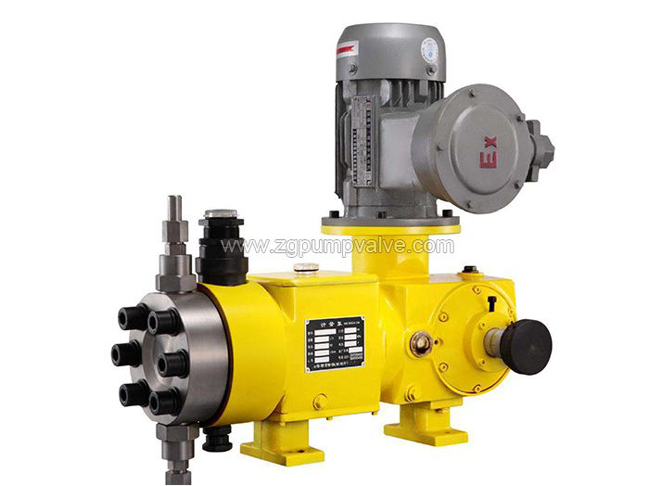Learn - Jan. 12, 2021
The metering pump is also called quantitative pump or proportional pump. Metering pumps belong to reciprocating positive displacement pumps for precise metering, which usually require the stability accuracy of metering pumps to be no more than ±1%. The next metering pump supplier to explain the types of metering pumps, features and flow adjustment methods.
According to the type of structure of the hydraulic end of the metering pump, the metering pump is often divided into the plunger, hydraulic diaphragm, mechanical diaphragm and bellows-type four kinds.

The structure of the pump is basically the same as the ordinary reciprocating pump, the hydraulic end of the cylinder, plunger, suction and discharge valves, seal packing and other components, in addition to meeting the design requirements of the hydraulic end of the ordinary reciprocating pump, the pump should also have an impact on the metering accuracy of the suction valve, discharge valve, seal and other components to carefully design and select.
Usually called a diaphragm metering pump. Single diaphragm metering pump in the front of the plunger is equipped with a layer of the diaphragm (plunger and diaphragm do not contact), the hydraulic end of the separation into the infusion chamber and hydraulic chamber. The infusion chamber is connected to the pump suction and discharge valve, and the hydraulic chamber is filled with hydraulic oil (light oil) and connected to the hydraulic oil tank (refill tank) at the upper end of the pump body. When the plunger moves back and forth, the pressure is transmitted to the diaphragm through the hydraulic oil and deformation caused by the volume change after the previous flexure, to play a role in conveying liquid and meet the requirements of accurate metering.
The diaphragm is connected to the plunger mechanism, no hydraulic oil system, the back and forth movement of the plunger directly drive the diaphragm back and forth deformation.
Structure and mechanical diaphragm metering pump are similar, but the bellows instead of the diaphragm, the end of the plunger and bellows fixed together. When the plunger reciprocating movement, so that the bellows are stretched and compressed, so as to change the volume of the cylinder, to achieve the purpose of liquid delivery and metering.
Metering pump commonly used to adjust the flow of the plunger (or piston) stroke, adjust the number of plunger reciprocation or both of these three methods, which is the most widely used to adjust the stroke of the way. This method is simple, reliable and can maintain high metering accuracy at low flow rates. There are three ways of stroke adjustment as follows.
① Parking manual adjustment. The stroke of the metering pump is adjusted manually when it is stopped.
②Manual adjustment during operation. In the pump operation to change the axial displacement, in order to indirectly change the crank radius, to achieve the purpose of adjusting the stroke length. Commonly used methods include N-shaped crankshaft adjustment, L-shaped crankshaft adjustment and eccentric cam adjustment, etc.
③ Automatic adjustment in operation. There are two common types of pneumatic control and electric control. Pneumatic control is to achieve the purpose of automatic adjustment of stroke by changing the pressure signal of air source. Electric control is to achieve the purpose of automatic stroke adjustment by changing the electric signal.